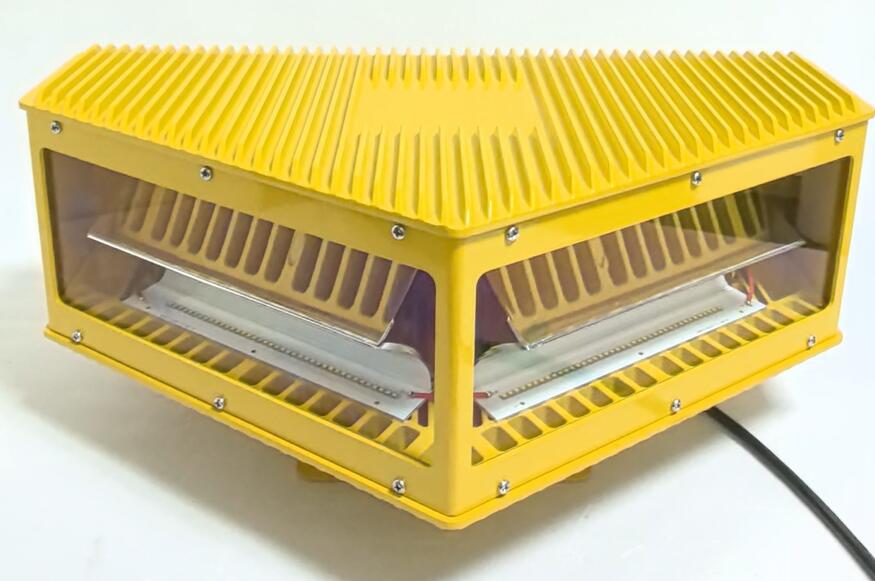The Essential Role of Obstacle Lights in Aviation Safety
Obstacle lights are critical components in aviation and infrastructure safety, designed to mark tall structures that could pose hazards to aircraft. These lights ensure visibility during both day and night, reducing the risk of collisions and enhancing navigational safety. This article explores the importance, types, regulations, and technological advancements of obstacle lights.
Why Obstacle Lights Are Indispensable
With the increasing number of high-rise buildings, wind turbines, telecommunication towers, and bridges, the risk of aerial collisions has grown significantly. Obstacle lights serve as visual warnings, helping pilots identify and avoid potential obstructions.
Key Functions of Obstacle Lights:
Enhanced Visibility: They provide high-intensity illumination, making structures noticeable in low-light conditions.

Collision Prevention: By marking hazardous objects, they minimize the risk of accidents.
Regulatory Compliance: Aviation authorities mandate their installation on tall structures to meet safety standards.
| obstacle light |
Types of Obstacle Lights
Different structures require varying types of obstacle lights based on height, location, and purpose. The main categories include:
1. Low-Intensity Obstacle Lights
Used for structures below 45 meters (148 feet).
Typically red and steady-burning.
Common on small buildings, cranes, and power lines.
2. Medium-Intensity Obstacle Lights
Suitable for structures between 45 and 150 meters (492 feet).
| obstacle lights |
Can be red or white, flashing or steady.
Often installed on telecom towers and wind farms.
3. High-Intensity Obstacle Lights
Required for structures exceeding 150 meters.
Emit bright white flashes visible from long distances.
Used on skyscrapers, tall chimneys, and broadcasting towers.
4. Dual Lighting Systems
Combine red and white lights for optimal visibility.
Adjust intensity based on ambient light conditions.
Regulations and Standards
Aviation authorities worldwide enforce strict guidelines for obstacle light installation. Key regulatory bodies include:
ICAO (International Civil Aviation Organization): Sets global standards for obstacle lighting.
FAA (Federal Aviation Administration): Regulates requirements in the U.S.
EASA (European Union Aviation Safety Agency): Oversees European standards.
Key Compliance Requirements:
Placement: Lights must be positioned at the highest point and intermediate levels of a structure.
Brightness: Intensity must meet specified candela ratings.
Flashing Patterns: Certain structures require synchronized flashing for better recognition.
Technological Advancements in Obstacle Lights
Modern obstacle lights incorporate cutting-edge technology to improve efficiency and reliability.
1. LED Technology
Energy-efficient and long-lasting.
Brighter illumination with lower power consumption.
2. Solar-Powered Systems
Reduce dependency on electrical grids.
Ideal for remote locations.
3. Smart Monitoring Systems
Automated fault detection and alerts.
Remote control and diagnostics for maintenance.
4. Adaptive Lighting
Adjusts brightness based on weather and visibility conditions.
Reduces light pollution while maintaining safety.
Applications Beyond Aviation
While primarily used in aviation, obstacle lights also serve other industries:
Wind Energy: Mark wind turbines to prevent collisions with low-flying aircraft.
Maritime Safety: Used on offshore platforms and lighthouses.
Urban Infrastructure: Ensure skyscrapers and bridges are visible to helicopters.
Obstacle lights play a vital role in safeguarding air travel and infrastructure. With evolving technology, these systems are becoming more efficient, sustainable, and intelligent. Compliance with international standards ensures that structures remain visible, reducing risks for pilots and enhancing overall aviation safety. As urbanization and construction continue to rise, the importance of obstacle lights will only grow, making them an indispensable part of modern safety systems.
